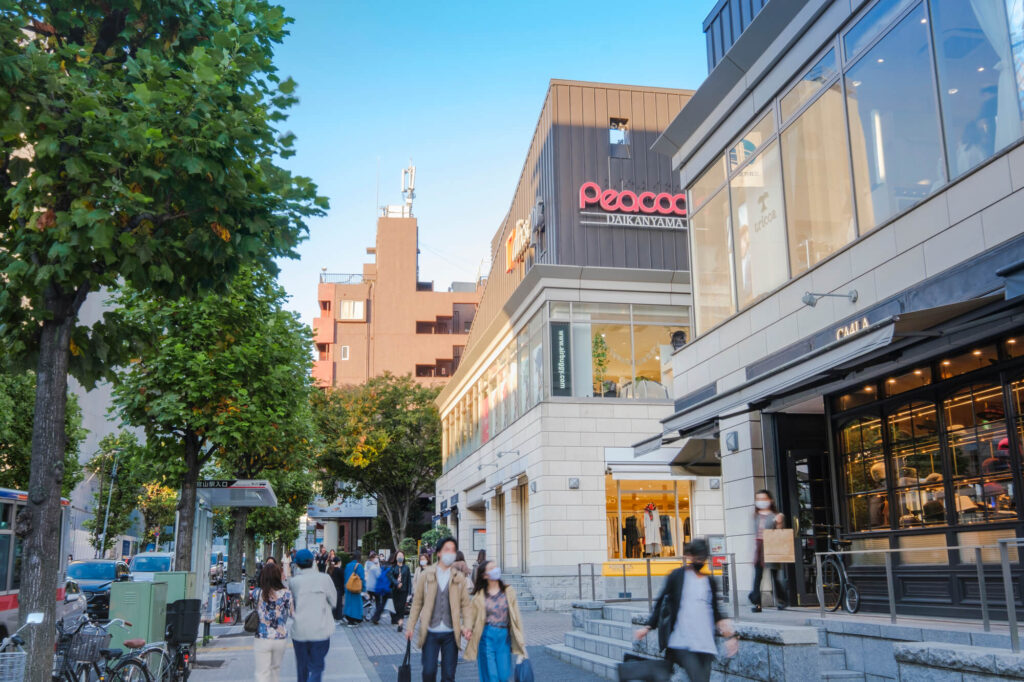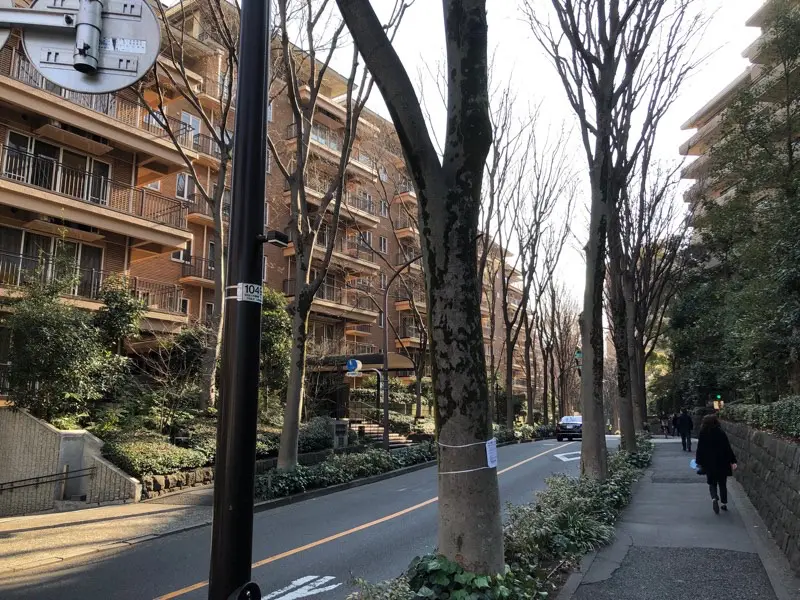Let’s start with an undeniable fact: real estate value is all about location.
Especially in Japan, Tokyo stands as the central hub, and its array of upscale residential neighborhoods has long been the epitome of people’s aspirations, maintaining an unparalleled status.
This popularity is steadfast, providing a significant advantage in terms of asset value. Throughout its history, these neighborhoods have demonstrated unwavering stability in long-term property trends, never witnessing depreciation in any scenario, and there’s little cause for concern about the future.
In this article, we will delve into the prestigious luxury residential areas of Tokyo that are a must-know. We’ll thoroughly explain their definitions, pinpoint their specific locations and features using maps, and expound upon their abundant charm and prestige.
The saying goes, “He who conquers Tokyo’s luxury residential areas conquers Japan’s real estate.”
So, let’s explore together these exceptional zones of Tokyo’s real estate realm – areas where buying means no mistakes.
The Reliability of This Article
This article was written by someone with the following background:
- Over 15 years of experience in real estate brokerage at a well-known major real estate agency
- Successfully closed more than 300 real estate brokerage cases to date
- A certified 1st Class Financial Planner
- A Certified Financial Planner (CFP)
- A licensed Real Estate Transaction Specialist
Key Characteristics of Luxury Residential Areas
While there isn’t a strict definition for upscale residential areas, they generally refer to regions that possess some or several of the following features:
- Elegance in the Neighborhood: The blocks are well-maintained, with appropriate road widths (6 meters or more) ensured.
- Generous Plots: There are regulations on building coverage and minimum land area.
- Excellent Accessibility: These areas benefit from advantageous transportation conditions.
- Solid Ground and Elevated Locations: They are situated on well-founded elevated grounds, minimizing risks of flooding and similar concerns.
- Cultural Elements: Boasting a rich historical significance as residential zones, often with a history of accommodating affluent individuals and notable figures.
- Name Recognition: Simply hearing the name instantly identifies the area as prestigious.
①Denenchofu (Ota Ward)

Denenchofu, an upscale residential enclave in Ota Ward, offers a pastoral atmosphere that permeates the area. Stretching from the western rotary of Denenchofu Station, the ginkgo-lined streets and the low-rise buildings surrounded by lush gardens define its distinct character. Here, a rustic vibe prevails, creating a sense of tranquility.
The allure of Denenchofu also lies in its unique urban planning. Conceived by Tokyu Railways founder Eiichi Shibusawa, the layout of this area draws inspiration from Paris’ Arc de Triomphe, featuring roads radiating outwards from the central station. The result is a meticulously arranged streetscape, showcasing the success of thoughtful urban design.
The ‘Denenchofu Charter,’ a set of building regulations, is another hallmark of this area. These rules dictate building height and plot size, leading to a prevalence of spacious residences that contribute to a serene living environment.
Close to the station, supermarkets and commercial facilities provide convenient shopping options, while the abundant green spaces offer opportunities for leisurely park outings. The area caters well to children’s recreational needs, providing an environment that embraces a quiet, verdant lifestyle.
Denenchofu’s residential zone boasts scenic countryside views, picturesque streets, and an excellent educational environment. Those who choose this area are typically affluent individuals seeking a tranquil setting and open living spaces. They revel in the charm of Denenchofu to the fullest extent.
②Shōtō(Shibuya Ward)

Shoto, an upscale residential enclave within Shibuya Ward, stands as a tranquil haven in the heart of the city, embodying the serene lifestyle of its residents.
Originating from land acquired by the Nabeshima family following the Meiji Restoration, Shoto underwent a transformation from a tea garden called ‘Shoto-en’ to an exclusive residential neighborhood during the Taisho era, with influential figures from politics and business leading the change.
One of its allures lies in the distinctive backdrop of Shoto, originally subdivided into vast plots of over 200 tsubo. This foundation has nurtured an array of luxurious mansions. Additionally, it has been developed as a first-category low-rise residential area, with rules requiring plots of over 200 square meters, resulting in a landscape graced by spacious homes.
Shoto’s distinguishing feature is its residents’ sensitivity to privacy, evident through high walls and enclosed settings. This contributes to a unique ambiance that marries sophistication with exclusivity. The area is rich in cultural institutions and lush parks, offering opportunities to savor the changing seasons at places like the Shoto Museum of Art, Kanze Noh Theater, and Nabeshima Shoto Park.
Furthermore, the area known as ‘Okushibu’ (back Shibuya) also draws attention. It’s home to restaurants, bars, and hidden gems that add vibrancy to the adult lifestyle.
③Banchō (Chiyoda Ward)

Banchō, encompassing the neighborhoods from Ichibancho to Rokubancho within Chiyoda Ward, is renowned as Japan’s first upscale residential area. Adjacent to the Imperial Palace, it stands as one of Japan’s emblematic prestigious residential zones.
Historically, Banchō has been home to numerous cultural figures, including notable names like Kōsaku Yamada, Akiko Yosano, and Toshio Shimazaki. It also boasts a history as a diplomatic hub, with a diverse array of international embassy buildings contributing to its unique cityscape.
Chiyoda Ward’s Banchō area holds a prominent status as a center of education and culture within the city, harboring both public and private prestigious schools. From Tsuda University, founded by women’s education pioneer Umeko Tsuda, to institutions like Joshi Gakuen Junior and Senior High School, Tokyo Kasei Gakuin Junior and Senior High School, and Ochanomizu Junior and Senior High School, the area offers a rich educational landscape.
This district exudes a refined nobility harmonizing with nature, where Japanese essence intermingles with an international atmosphere. With a well-developed transportation network, it efficiently fulfills its role as a hub in the heart of Tokyo. Experiencing the charm of Banchō in Chiyoda Ward is highly recommended.
④Shirokane(Minato Ward)

Located in the southern part of Minato Ward, Tokyo, Shirokane is often grouped together with Shirokanedai and Shirokane Takanawa as the ‘Shirokane Area.’ Shirokanedai lies to the south of Shirokane, while Shirokane Takanawa is a station name rather than a place name. The correct pronunciation is ‘shi-ro-ka-ne.’
The history of this area traces back to the Nanboku-cho period (1336-1392), when Yanagishita Kamakura-no-kami, who possessed silver during that time, had a residence here. Shirokane has a reputation for being upscale and refined. It serves as the foundation for luxurious residential neighborhoods, with a history of prestigious schools like Seishin Joshi Gakuin and Meiji Gakuin, as well as former daimyo residences. However, around the Kitazato-dori area in Shirokane, you’ll find old houses that still exude a more down-to-earth atmosphere.
The allure of the Shirokane Area is multifaceted. Its excellent access to the city center allows easy travel to places like Meguro and Mita-Otemachi via the Toei Mita Line from Shirokanedai or Shirokane Takanawa, and to Azabu-Juban and Roppongi via the Namboku Line. The Shirokane Shokokai (Merchants’ Association) preserves traditional shops that give off an old-town ambiance. Nature is abundant here as well, with Happo-en Garden and the National Museum of Nature and Science’s Natural Education Garden in close proximity. Moreover, the area offers comprehensive childcare services, including consultations with public health nurses and midwives, as well as international exchanges.
The Shirokane Area harmoniously blends luxury with a down-to-earth atmosphere, showcasing diverse charms. A visit to experience its allure firsthand is definitely worthwhile.
⑤Jiyugaoka(Meguro Ward)

Jiyugaoka is gaining attention as one of Tokyo’s trendiest neighborhoods. Positioned at the intersection of the Tokyu Toyoko Line and Tokyu Oimachi Line, this area boasts scattered refined shops, allowing visitors to enjoy leisurely shopping and strolls. While the vicinity around the station is bustling, moving away from the station reveals a serene residential district. This unique combination has earned it high rankings in ‘Desirable Places to Live’ lists.
In 1927, the opening of the Tokyu Toyoko Line gave birth to Jiyugaoka Station. Originally named ‘Kyuhachifutsu-mae,’ it was later changed to ‘Jiyugaoka’ thanks to the efforts of local cultural figures. With many intellectuals residing in the area, fostering connections, a distinctive and vibrant ambiance characteristic of Jiyugaoka was nurtured.
Jiyugaoka’s allure extends to its shopping and café culture. Refined shopping centers and unique specialty stores line the streets, with places evoking a European ambiance also present. Particularly, the abundance of dessert shops and cafes, ranging from longstanding establishments to emerging ones, offers a wide array of choices.
Moreover, Jiyugaoka hosts various events throughout the year, fostering a strong sense of community. Events like the Cherry Blossom Festival and Sweets Festival delight people year-round. The Kumano Shrine Festival, Osanodai Festival, and Jiyugaoka Goddess Festival also contribute to the area’s vibrant event scene.
Jiyugaoka combines a stylish atmosphere with a warm community, creating an inviting area that provides both visitors and residents with a sense of joy.
⑥Azabu (Minato Ward)

The Azabu area located in Minato Ward, Tokyo, is renowned for its diversity. Azabu is divided into various neighborhoods including Higashi-Azabu, Azabu Tanukicho, Azabu Eizaka-cho, Azabu-Juban, Minami-Azabu, Moto-Azabu, Nishi-Azabu, and Azabu-Dai. This area boasts an international and upscale residential aspect. Especially, Azabu-Juban is drawing attention as a neighborhood where you can enjoy a mix of historic establishments and modern vibes.
With over 40 embassies, the Azabu area exudes an international ambiance. Adjacent to Roppongi, Akasaka, and Aoyama, Azabu is known for its numerous upscale residences and condominiums, often referred to as the ‘Azabu brand.’
Azabu is also recognized for its hilly terrain, with many slopes carrying historical names. Each name, like ‘Kurayami-zaka’ or ‘Sendai-zaka,’ holds its own story and history. The Azabu-Juban shopping street is equally charming, blending sophisticated atmosphere with historical charm.
Azabu-Juban can be considered a hidden gem for adults, harmonizing historical venerable establishments with new shops. The opening of subway lines has boosted traffic, making it easier for people to come and go, while seasonal events also add to its appeal. Moto-Azabu and Higashi-Azabu exhibit unique characteristics, illustrating the multifaceted nature of the entire Azabu area.
Azabu area is where the sophistication of upscale living intertwines with the charm of an old-town atmosphere, all while radiating an international vibe. Exploring Azabu’s allure while experiencing its diversity can be an enriching experience.
⑦Daikanyama(Shibuya Ward)

Nestled within Tokyo’s Shibuya Ward, Daikanyama is a trendy district where tranquil residential areas, stylish boutiques, diverse dining establishments, and office buildings seamlessly blend. The area of Daikanyama stretches from around Tokyu Toyoko Line’s Daikanyama Station to Hachiman Street, and from the former Yamate Street down the hill towards the Meguro River. It’s primarily known for its vibrant fashion scene. While Daikanyama boasts quiet residential corners, its array of shops and eateries has earned it high rankings in ‘Desirable Places to Live’ lists.
Furthermore, the Hillside Terrace, completed in 1969, emerged as a beacon of modern architecture in the 1970s. The distinctive features of Daikanyama also include ‘T-SITE,’ centered around Tsutaya Books, and the upscale residential neighborhood of Minamihirata-cho. The latter has a history dating back to the Edo period and has developed into an affluent residential area. Numerous embassies and churches are scattered here, infusing an international ambiance that becomes a defining essence of the area.
Daikanyama stands as an alluring district due to its diversity, epitomizing a blend of history and modernity, and showcasing sophisticated spatial design.
⑧Hiroo: (Shibuya Ward)

Hiroo stands as a distinguished upscale residential area within Shibuya Ward, offering a tranquil atmosphere while conveniently nestled amidst Shibuya, Ebisu, Aoyama, and Roppongi. Particularly, the Hiroo 2nd and 3rd district areas are renowned for their elevated location, adorned with luxurious mansions and low-rise condominiums, highlighted by the imposing entrance of Seisen Jogakuin University.
Separated by Gaien Nishi Street, Hiroo’s western side is known as “Hiroo,” while the eastern side is named “Minami-Azabu.” Benefitting from its elevated topography, Hiroo showcases a residential expanse blessed with vistas and ample sunlight, with the Hiroo 2nd and 3rd districts standing out as premier residential neighborhoods.
This locale features numerous luxury rental properties tailored for expatriates, with monthly rents often exceeding 2 million yen. These residences exude an air of opulence, characterized by unassuming yet captivating designs. Much like Minami-Azabu, Hiroo also boasts the comfort of an elevated vantage point and an international ambiance, offering residents a choice of addresses in line with their preferences.
Life in Hiroo strikes a balance between convenience and serenity. Daily necessities are easily procured around the station vicinity, while major shopping endeavors can be undertaken in neighboring areas like Ebisu and Roppongi. Hiroo boasts a variety of local shops and dining establishments, along with nearby parks that offer opportunities for nature immersion.
A range of esteemed private schools and international institutions further enrich the region, making it an ideal environment for families.
Hiroo epitomizes an upscale residential district blending tranquility and elegance, appealing to those seeking a refined lifestyle. Its distinctive charm sets it apart from other luxury residential areas, providing an elegant and relaxed living environment that is truly one of a kind.
⑨Rikugien (Bunkyo Ward)

Known as an educational and cultural hub, Hon-komagome is situated in the northern part of Bunkyo Ward. Within this area lies the district called “Yamato mura” which is renowned as one of the finest residential neighborhoods in Tokyo.
In the past, it was dotted with the residences of various feudal lords and samurai, and it later became an area with the mansions of Mitsubishi conglomerate due to Iwasaki Yataro’s land acquisitions. Presently, it’s a luxury residential district known for hosting the homes of notable figures and dignitaries, including Empress Michiko, who moved here for her studies.
Geographically, it boasts excellent access to national roads and train stations, making it an exceptionally well-located area.
Lavish properties now stand on the former samurai residences, and the area is well-equipped with hospitals, schools, and facilities. The nearest stations are “Sugamo Station” and “Komagome Station,” providing convenient transportation options.
Rikugien Garden stands as a landmark in Yamato Village, its exquisite garden having been created by Yanagisawa Yoshiyasu. Nearby, the “Bunkyo Green Court” offers a convenient location with various commercial and lifestyle facilities coming together.
⑩Jingumae (Shibuya Ward)

Jingumae (Shibuya Ward), as you step off the JR Yamanote Line at Harajuku Station, spreads before you. This area is filled with a diverse range of cultures, such as fashion, music, and art, each contributing to its unique charm. It harmonizes distinctive neighborhoods like Takeshita Street, a hub for fashion trends; Cat Street, the heart of youth culture; and Omotesando, where luxury brands line the avenue.
The recently revitalized Miyashita Park, known as “MIYASHITA PARK,” features a mix of high-end brands, cafes, galleries, and more, providing an array of shopping experiences.
Numerous galleries are scattered about, including the Watari Museum of Contemporary Art and ESPACE Louis Vuitton, fostering a vibrant art scene. Consequently, this area accommodates a blend of diverse cultures, offering daily life a stimulating backdrop.
Moreover, Jingumae serves as a cultural and educational district, preserving a refined atmosphere. Educational institutions, museums, and embassies are abundant, fostering an international ambiance, and the area is renowned as a sophisticated adult community. Convenient transportation options are available, with subway and JR stations nearby, ensuring smooth access to the city center.
Furthermore, you can easily connect with nature through sites like Meiji Shrine and Yoyogi Park. Meiji Shrine’s expansive grounds provide a haven of tranquility surrounded by nature, offering solace to visitors. The nearby Yoyogi Park bustles with sports and events, providing a versatile space for enjoying a variety of activities.
⑪Aoyama (Minato Ward)

The name Aoyama derives from the vast estate of the Aoyama family, who were close associates of Tokugawa Ieyasu. During the Edo period, it was an area of townhouses and mixed forests, considered a commoner’s district. However, from the Meiji era onwards, it grew into a residential area for the middle class. Today, upscale boutiques and beauty salons gather along streets like Miyuki-dori, Kotto-dori, and Killer Street, each forming distinctive shopping areas.
Aoyama is divided into North Aoyama (1st to 3rd blocks) and South Aoyama (1st to 7th blocks), separated by Aoyama-dori in Minato Ward. When people refer to “Aoyama,” they generally mean the vast area surrounded by Omotesando, Harajuku, Roppongi, Hiroo, and Shibuya, with Omotesando serving as the main approach to Meiji Shrine.
Within the Aoyama area, there are three main nearby stations: Aoyama-itchome Station (accessible via Tokyo Metro Ginza Line, Hanzomon Line, and Toei Subway Oedo Line), Gaienmae Station (accessible via Tokyo Metro Ginza Line), and Omotesando Station (accessible via Tokyo Metro Ginza Line, Chiyoda Line, and Hanzomon Line). This provides convenient access to Shibuya, Ginza, Ueno, Otemachi, Hibiya, Nagatacho, Kinshicho, and more.
Aoyama is well-known as a hub for fashion information, but it also boasts a unique landscape where luxurious residential areas unfold just a step away from major roads into side streets. High-rise apartments are few, with charming mid-rise apartments in abundance. Additionally, Aoyama’s allure includes flagship stores of luxury brands and shops catering to the affluent, making it a vibrant spot for sophisticated adults.
⑫Roppongi (Minato Ward)

Located in the northern part of Minato Ward, Tokyo, Roppongi stretches from 1st to 7th districts and is adjacent to Minami Aoyama, Akasaka, Toranomon, and Azabu. This area is known for its prominent features such as Roppongi Hills, a large commercial complex, and towering condominiums, making it one of Japan’s premier entertainment districts. The transportation access includes Roppongi Station, Azabu-Juban Station, and Nogizaka Station, with the Toei Oedo Line also available.
Looking back into history, Roppongi developed as a temple and shrine town during the Edo period, and with the onset of modernization, military facilities were established here. After World War II, it gained attention as the location of the GHQ (General Headquarters). The name’s origin has multiple theories, including associations with the names of daimyo residences.
In the post-war period, foreigner-oriented establishments flourished, with luxury brands and dining establishments lining the streets, emanating a distinct stylish ambiance. Additionally, cultural facilities like the Mori Art Museum and the National Art Center contribute to Roppongi’s charm. Amidst the coexistence of high-rise buildings and residential areas, the district thrives as a business hub while hosting upscale eateries and shops, along with scenes of luxury cars cruising along.
The allure of this district lies in its harmonious blend of work, play, and residence, with diverse shops and cultural venues striking a balanced presence. Renowned for its bustling atmosphere, it exudes sophistication and offers a wealth of international interactions.
Roppongi’s area brand is recognized nationwide, often associated with success and accomplishments. Its refinement and sophisticated charm attract a multitude of people, solidifying its place as one of Japan’s representative neighborhoods.
Jona Gosan
“Jonan Gozan” refers to a collective term for five elevated areas located in the southern part of Tokyo’s city center, specifically within the Jonan area (an area situated to the south of the Imperial Palace). These elevated areas are located in the region that connects Meguro Station and Shinagawa Station on the JR Yamanote Line, and they consist of “Goten-yama,” “Yatsuyama,” “Shimazu-yama,” “Ikedayama,” and “Hanabusayama.”
The name originates from the historical presence of daimyo residences and homes associated with feudal lords. This area is known for its stable ground and earthquake-resistant properties, making it a region that has been recognized for its resilience. Since the early Showa period, it has retained a strong reputation as a high-end residential district with a well-established brand image.
⑬Shimazuyama(Shinagawa Word)
This area is located on a high ground near the present-day Higashi-Gotanda 1st and 3rd districts in Shinagawa Ward.
During the Edo period, this was the site of an extensive estate covering 75,000 square meters owned by the former Date Clan. In the Meiji era, it was purchased by the former Lord of Kagoshima Domain, Duke Shimazu, who built an English-style mansion on the property. This mansion became a popular social venue for many figures in the business world, earning the name “Shimazu-yama” or Shimazu Hill.
Subsequently, due to financial difficulties before and after World War II, the ownership was transferred to the Bank of Japan. Later, it was acquired by Seisen Women’s University, where it remains to this day.
The former Duke Shimazu mansion is a beautiful Renaissance-style Western building and is still located within Seisen Women’s University. It has been designated as one of the “Shinagawa’s 100 Scenic Views” and retains its historical charm.
⑭Ikedayama (Shinagawa Ward)
An area located on a highland in the present-day 4th and 5th neighborhoods of Higashi-Gotanda, Shinagawa Ward.
Named after the Ikeda family’s estate from the Bizen Okayama Clan, it is referred to as “Ikeda-yama”. This area offers a serene escape from the bustle around Gotanda Station, characterized by a calm and low-rise environment (Designated Residential Zone for Low-Rise Residences). Ikeda-yama features well-maintained parks such as Ikeda-yama Park, a traditional Japanese garden created from the former Ikeda family estate’s backyard, and “Nemunoki no Niwa Park,” which stands on the site of Empress Michiko’s childhood home.
⑮Hanabusayama (Shinagawa Ward)
The area is located near the high ground of Kamiosaki 3-chome in Shinagawa Ward.
During the Edo period, there were daimyo residences in this area. In the Meiji and Taisho eras, the area came to be known as “Hanabusa-yama” due to the presence of a villa belonging to Viscount Hanabusa Yoshimoto, a renowned diplomat and former president of the Japanese Red Cross Society.
⑯Gotenyama (Shinagawa Ward)
Gotenyama is an area located on a hill in the northern part of Shinagawa Ward in Tokyo. In the past, it was a seaside hill overlooking Tokyo Bay and was well-known for its cherry blossoms. It is said to have been established by Tokugawa Ieyasu in the early Edo period, and there was a residence called “Shinagawa Goten” where the Tokugawa Shogun family rested during falconry expeditions. This is how the name “Gotenyama” originated.
During the Meiji era, there were many mansions of wealthy families in the area. In the Showa era, shortly after World War II, Sony moved to this district, and it is also known as the birthplace of Sony.
Gotenyama offers a historical connection to the Tokugawa era and has witnessed the growth of various industries over the years. Its unique blend of history and modern development makes it a distinctive and noteworthy area within Shinagawa Ward.
⑰Yatsuyama (Minato Ward)
Yatsuyama (Minato Ward)
The origins of Yatsuyama are subject to various theories, including the notion that there were eight capes or that residences of eight feudal lords once stood here. During the Edo period, the soil from Yatsuyama was utilized for the reconstruction and land reclamation of the Meguro River, leading to the gradual erosion of the hills and transforming the area into flat terrain.
In the past, Yatsuyama was home to a retreat owned by the Iwasaki family, and today it houses a facility known as “Kaitokaku,” which belongs to the Mitsubishi Group.
One of the notable features of “Kaitokaku” is its beautiful wisteria trellis.
In Conclusion
In this article, we provided an explanation of Tokyo’s prestigious residential areas that are not only representative but also important to know. We discussed their locations and distinctive features.
From the trending spots of recent years to the traditionally esteemed high-end neighborhoods with a long history, Tokyo boasts numerous wonderful areas of value.
Each of these areas holds a rich history and exceptional charm, offering an ambiance that exudes luxury even through its atmosphere alone.
Whether you’re able to make a purchase or not, having this knowledge will undoubtedly elevate your understanding of real estate and make you more informed about the topic.
We hope that you’ll find this information useful when considering real estate investments.
Thank you once again for reading up to this point!











